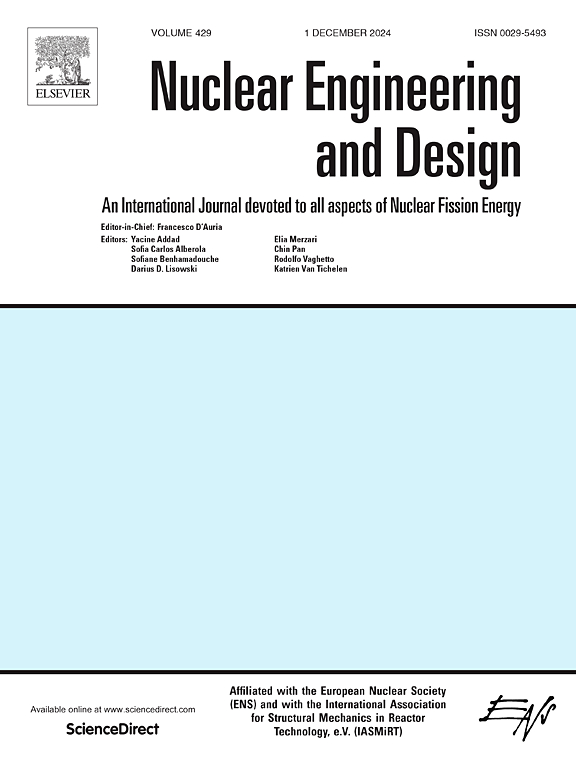Research on the soft measurement of the flow by reactor coolant pumps based on the motor current signature analysis
IF 1.9
3区 工程技术
Q1 NUCLEAR SCIENCE & TECHNOLOGY
引用次数: 0
Abstract
Effective monitoring and identification of the operational flow of reactor coolant pumps (RCPs) are crucial for enhancing the safety and stability of nuclear power operations. To achieve the goal without the potential interference from intrusive sensors, the paper employs wavelet analysis and intrinsic time scale decomposition (ITD) to examine the collected current signals in both the time and frequency domains. The recurrent neural network (RNN) is used to determine the operational status of the pumps at different flow rates. The soft measurement model of the RCP flow, based on motor current signature analysis (MCSA), is built and experimentally validated using the RNN to identify the pump’s performance at different flow rates. The results show that the dominant frequency of pressure pulsation corresponds to the axial frequency in impeller channels, with the amplitude of the frequency component exhibiting a direct positive correlation to the flow rate. The impeller channel-generated pressure pulsation signal’s dominant frequency corresponds to the blade passing frequency, which exhibits an amplitude increase with higher flow rates. The soft measurement model, after the RNN training, achieves a recognition accuracy as high as 95.3% for flow rates of 0.8Qd, 0.9Qd, 1.0Qd, 1.1Qd, and 1.2Qd. The model provides a certain value for subsequent studies in the field of pump flow monitoring.
求助全文
约1分钟内获得全文
求助全文
来源期刊

Nuclear Engineering and Design
工程技术-核科学技术
CiteScore
3.40
自引率
11.80%
发文量
377
审稿时长
5 months
期刊介绍:
Nuclear Engineering and Design covers the wide range of disciplines involved in the engineering, design, safety and construction of nuclear fission reactors. The Editors welcome papers both on applied and innovative aspects and developments in nuclear science and technology.
Fundamentals of Reactor Design include:
• Thermal-Hydraulics and Core Physics
• Safety Analysis, Risk Assessment (PSA)
• Structural and Mechanical Engineering
• Materials Science
• Fuel Behavior and Design
• Structural Plant Design
• Engineering of Reactor Components
• Experiments
Aspects beyond fundamentals of Reactor Design covered:
• Accident Mitigation Measures
• Reactor Control Systems
• Licensing Issues
• Safeguard Engineering
• Economy of Plants
• Reprocessing / Waste Disposal
• Applications of Nuclear Energy
• Maintenance
• Decommissioning
Papers on new reactor ideas and developments (Generation IV reactors) such as inherently safe modular HTRs, High Performance LWRs/HWRs and LMFBs/GFR will be considered; Actinide Burners, Accelerator Driven Systems, Energy Amplifiers and other special designs of power and research reactors and their applications are also encouraged.
 求助内容:
求助内容: 应助结果提醒方式:
应助结果提醒方式:


